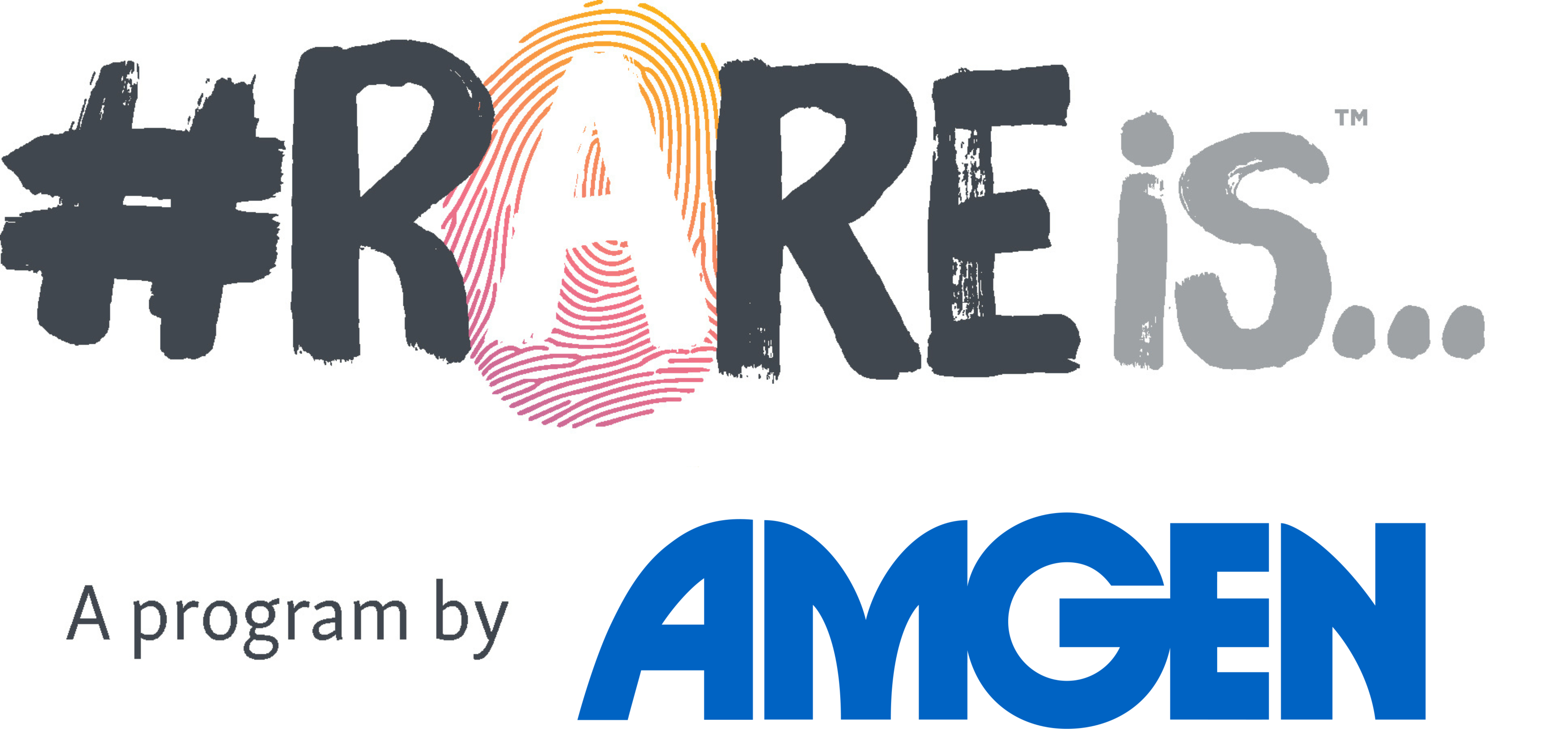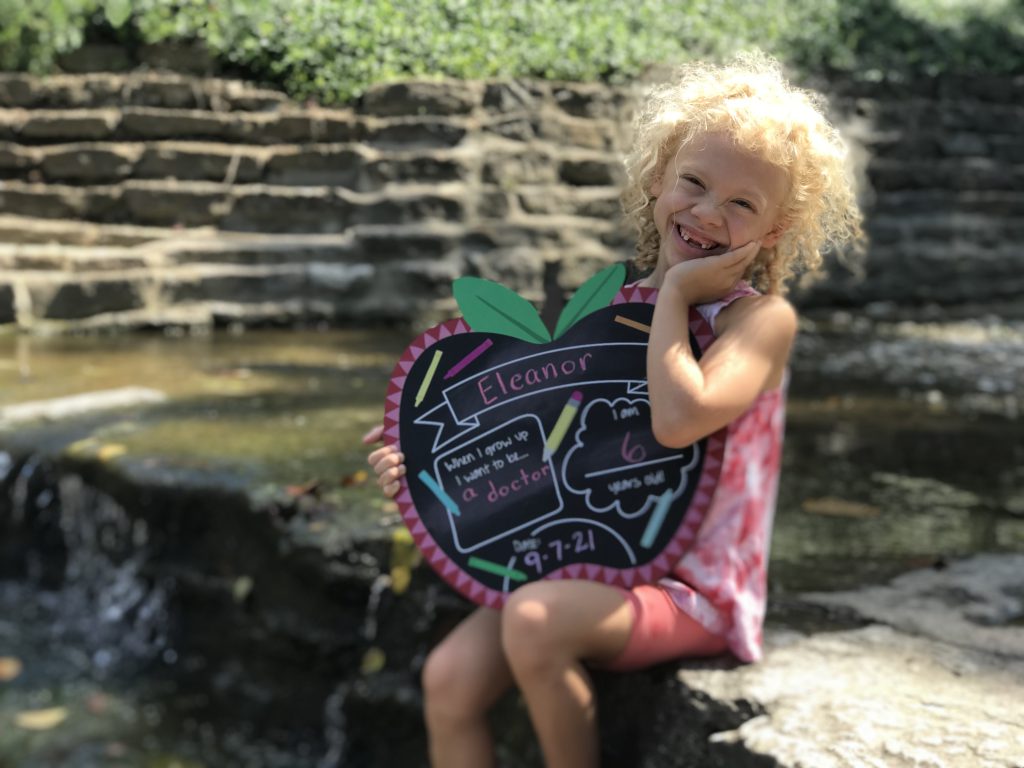An Odyssey to Diagnosis
When our daughter Elle was 10 months old, we started noticing that she had difficulty swallowing and could only eat a few small bites of anything at a given time. We knew something was wrong, but it took us more than 2.5 years of searching and pushing for answers before we received a confirmed diagnosis for Elle.
At 15 months old, when she wasn’t gaining weight between regular pediatrician appointments, Elle began feeding therapy after we requested a referral. We were also referred to a nutritionist, who implied that Elle was just a picky eater, and we needed to ensure she consumed more calories. After being sent home with recipes for thick smoothies, which completely disregarded the fact that we had described Elle’s difficulty swallowing, particularly thick foods, we felt defeated. It was one of the most frustrating and disheartening parts of Elle’s whole journey – we consistently felt like we were the only ones who were really worried about her. We were constantly pushing and asking for more explanations, and we didn’t feel we were truly heard when we were describing Elle’s symptoms.
At 18-months old, she had lost weight and was admitted to the hospital after bloodwork showed severe dehydration. We explained that she was frequently asking for and drinking water, but it appeared that her body wasn’t getting the nutrients or hydration she desperately needed. The doctors immediately gave her a nasogastric (NG) tube to try to get her the nutrition she needed, but every time they pushed a formula through the tube, she threw up. She was experiencing cyclical vomiting, a disorder that causes recurrent episodes of nausea, vomiting and tiredness, and was throwing up 25-40 times per day. Despite feeling like the NG-tube would help, we still didn’t understand what was causing her symptoms and she didn’t seem to be getting better. Eventually, eight months later, she was given a gastric (G) tube to truly ensure she got the nutrition she needed. But we still didn’t have any answers.
When she turned three years old, Elle only weighed 20 pounds. After our gastroenterologist confessed that he felt like he wasn’t making any progress, he recommended that we see a genetics specialist or another endocrinologist. So, we went to work and received a recommendation from a family member for an endocrinologist who specialized in growth issues. It immediately felt different as soon as we walked into the office. He was the first doctor who seemed just as worried and concerned about Elle as we were. During the appointment, we happened to mention that it felt like Elle had a weird aversion to sunlight or bright light, and immediately the endocrinologist’s face fell. He explained that photophobia, or an aversion to light, was one of the key symptoms of a rare, genetic lysosomal storage disease called cystinosis. The signs and symptoms of the condition seemed to fit, so after some additional blood work, Elle was readmitted back to the hospital with a confirmed diagnosis of cystinosis, a rare lysosomal storage disorder that can cause widespread tissue and organ damage.
The Thing about Rare Disorders
We finally had a diagnosis and felt like we had a direction, but we still had to find treatments and therapies that could help our daughter live life with cystinosis. We quickly learned it was going to be an ongoing challenge as cystinosis affects organs and tissues throughout the body; just as you help adjust medications or therapies to help one part of her body, another part will be suffering from the effects of the disease and require attention. Even with a diagnosis and a treatment plan in place, the battles were still far from over. Every time she grows, every time she gets sick, every time we give her a new dose or a new medication, something might change and require immediate attention. It’s difficult because people living with cystinosis, and many other rare and chronic disorders, may look “fine” on the outside while inside they’re fighting a hidden disease. It’s often difficult for people outside of the rare and chronic disease community to understand what they’re going through.
Which is why it was so incredible when we first attended the Cystinosis Research Network (CRN) Family Conference shortly after Elle was diagnosed. It felt like we were finally home, and everyone there spoke a language that we understood; everyone understood what we were experiencing. There were veteran families who were able to say “I understand exactly what you’re going through. It’s going to get better.” It was so incredibly important for Elle to see other kids who had a similar story to hers so she could see what was possible. Even though she was so young, we knew it would make a difference. The entire experience felt like a dose of hope. We were able to talk to experts, researchers and clinicians who were actively using their talents to better the lives of a small group of people afflicted by cystinosis and who were willing, and even happy, to talk to us about it.
These conversations opened our eyes to what a relationship with a doctor could and should be. Up to the time of Elle’s diagnosis, we had felt like we were constantly battling for Elle on our own; no one seemed as concerned as we were. We felt lucky that Jon was an ER nurse, so he was able to help us navigate the system, but it still took us years to get Elle a diagnosis. Because of that, we recommend parents and caregivers keep asking the difficult questions – ask why and why not – and if the healthcare professionals don’t have a good answer, then it’s likely an opinion, rather than a diagnostic fact. And, while we don’t recommend being rude, you must not care about offending anyone in the cause of advocating for your child and finding answers. You have to be willing to follow your gut when it tells you there’s something more happening and do your own research – finding peer-reviewed information to help you push to find answers for your child. You have to get good at talking to doctors and making sure that they include the right diagnosis for your child in order to help with insurance for different therapies and treatments. You’re not going to be able to change the system, so you have to figure out how to work within it. People in the rare disease community are resilient and tenacious because they have to be.
Advocacy and Community
The community we experienced through the CRN Family Conference and organization has truly changed our lives. It changed Jon’s career trajectory – he decided to become a family nurse practitioner rather than staying in the ER, and now, 3.5 years after we attended the first conference, Jon is the president and vice president of development for the CRN organization.
We realized the opportunity and the need for families like ours to advocate for legislation in Washington, D.C. and locally that would benefit children with rare diseases. We could help make strides in efforts to encourage more expansive prenatal testing and efforts to get children diagnosed as early as possible. Because early diagnosis can be so critical for these conditions; when Elle was finally diagnosed, her kidneys were already in stage 3 kidney failure. She will need to have a kidney transplant much earlier than she would have if she’d been diagnosed sooner. Rare diseases are notorious for lengthy diagnostic odysseys, so anything we can do to advocate for better testing, faster diagnosis, and enabling other children like Elle to be diagnosed sooner and get the care they need earlier, we want to do it.
About Cystinosis
Cystinosis is an ultra-rare, genetic, metabolic, lysosomal storage disease that affects an estimated 2,000 people worldwide. The way it was described to Jon in nursing school is that “the lysosome is like the trash collector of the cell. And due to a mutation on the CTNS gene, the trash collector forgets to take out one type of trash. And that piece of trash is called cystine, and it forms crystals in the body.” Cystine, an amino acid, when not properly removed from the cell, can build up in various organs and tissues of the body, causing widespread tissue and organ damage. It can lead to kidney failure, muscle wasting, difficulty swallowing, diabetes, hypothyroidism, cerebral atrophy, photophobia, blindness, corneal ulceration, ventilatory impairment and more. Without treatment, children with cystinosis will usually develop end stage kidney failure and die prematurely.

